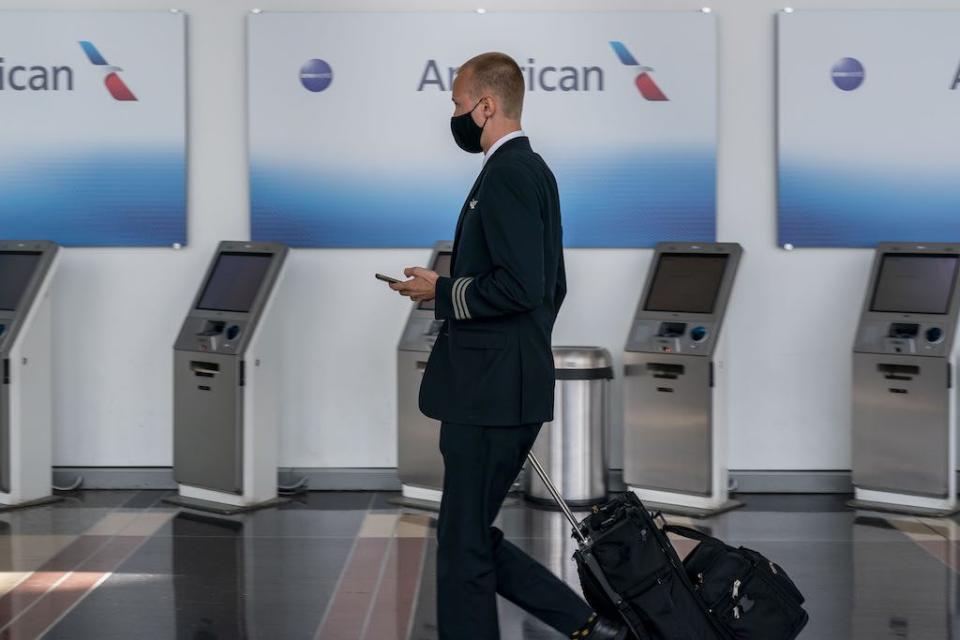American Airlines CEO Unconcerned by Potential U.S. Recession

The U.S. economic outlook has darkened in recent months after the economy unexpectedly contracted in the first quarter. That has raised some concerns about the continuity of the travel recovery, especially after the red hot summer airlines and others are forecasting.
But Robert Isom, CEO of American Airlines, is not losing sleep over a potential economic slowdown. The carrier improved its second quarter outlook on Friday, and maintains expectations of profits through the end of the year amid robust demand. It and other airlines are forecasting a busy summer with travelers paying as much as a third more for flights than they did last year.
“While there may be some concern about leveling off of growth rates, the airlines have not participated for the last 3 years in any of that growth,” Isom said at an investor conference held by Bernstein Friday. “We’re now just now getting back as an industry to within 10 percent of 2019. When you ask are you concerned, absolutely not. I see a demand for travel, and an industry that has been more or less constrained.”
And Isom is not alone in this view. MKM Partners analyst Conor Cunningham wrote on May 29 that demand this fall, or after the Labor Day holiday in September, “should be fine” as corporate travel ticks up after significant declines during the pandemic.
American expects corporate demand to be near 2019 levels by the end of June, Isom said Friday. The airline previously forecast a recovery to roughly 90 percent of three years ago in the second quarter.
In the meantime, U.S. airlines are benefitting financially from the constraints Isom mentioned. Top of the list is staffing, which ranges from a shortage of pilots to struggles at airports to hire for entry-level positions like janitors. Other issues include delayed aircraft deliveries and air traffic control restrictions. Alaska Airlines, Delta Air Lines, JetBlue Airways, and Spirit Airlines have been forced to cut schedules, while American, Southwest Airlines, and United Airlines are planning to fly less than they would have liked.
“We don’t have the pilots we need to fly a full regional schedule,” Isom said. “Capacity is going to be something, that we’re going to have to fly within the resources we have.”
The staffing situation is only affecting American’s regional affiliates that fly small Bombardier and Embraer jets under the American Eagle brand, he noted. Its mainline operation, or flights flown on Airbus and Boeing aircraft, has more pilots per plane than it did in 2019, Isom added.
American has parked around 100 small jets due to the lack of pilots, said Isom. This has resulted in schedule reductions and the suspension of regional routes, including ones to Evansville, Ind., Greenville-Spartanburg, S.C., and Long Beach, Calif.
The airline has cut planned third quarter flying by more than 6 points since the beginning of April to nearly 94 percent of 2019, according to data from Cowen & Co. American previously planned to fly the same amount as three years ago this summer.
United has also been forced to ground more than 100 small jets due to pilots. However, it opted to end service to a number of small cities, as well as cancel dozens of routes as a result.
“There’s a supply and demand imbalance right now,” Isom said of pilot demand and availability at regional airlines. However, he thinks the situation “can be remedied” but that it will take several years.
American offers a cadet program to funnel new pilots into the regional airlines it owns, which include Envoy and Piedmont Airlines. It partners with flight schools, including CAE, to train new pilots. Other carriers, namely Alaska and United, have gone a step further and opened their own flight schools to alleviate staffing issues. However, it takes at least a year for someone with no flying experience to become a certified pilot and, in most cases, several years.
Despite the staffing constraints, American joined many of its competitors Friday in raising its financial outlook. Total revenues will be up 11-13 percent compared to 2019 and the amount American earns per seat mile flown at least 20 percent in the second quarter. The guidance represents an at least 3 point and 4 point improvement, respectively, over the outlook provided in April. However, both costs and fuel expenses are also up.
Isom reiterated comments that other airline executives have said that demand, at least so far, has not been diminished by higher airfares. And he expects that demand to continue even if the U.S. slips into a recession.
While Isom is confident in American’s outlook, this summer is shaping up to be a challenge for the entire U.S. industry. Delta cancelled more than 700 flights over Memorial Day weekend — the unofficial start of summer in the U.S. — due to a variety of reasons and, on Thursday, American cancelled 485 flights, or 15 percent of its entire schedule, according to tracking website FlightAware. Weather, air traffic control, and other issues are not expected to ease — and traveler numbers are only forecast to rise — as the summer continues.
“American is going to be a carrier that can take you to where you want to go,” Isom said. “And what you’re going to find is you’re going to have a really reliable operation,” he added with little acknowledgement of the previous day’s poor operations.
Subscribe to Skift newsletters for essential news about the business of travel.
